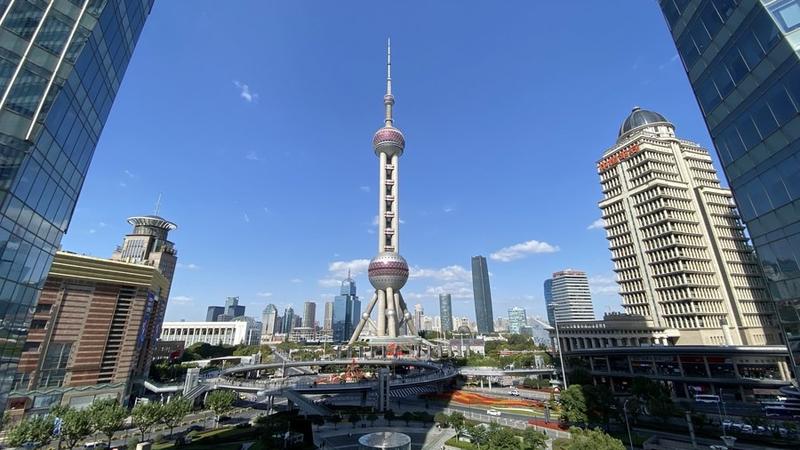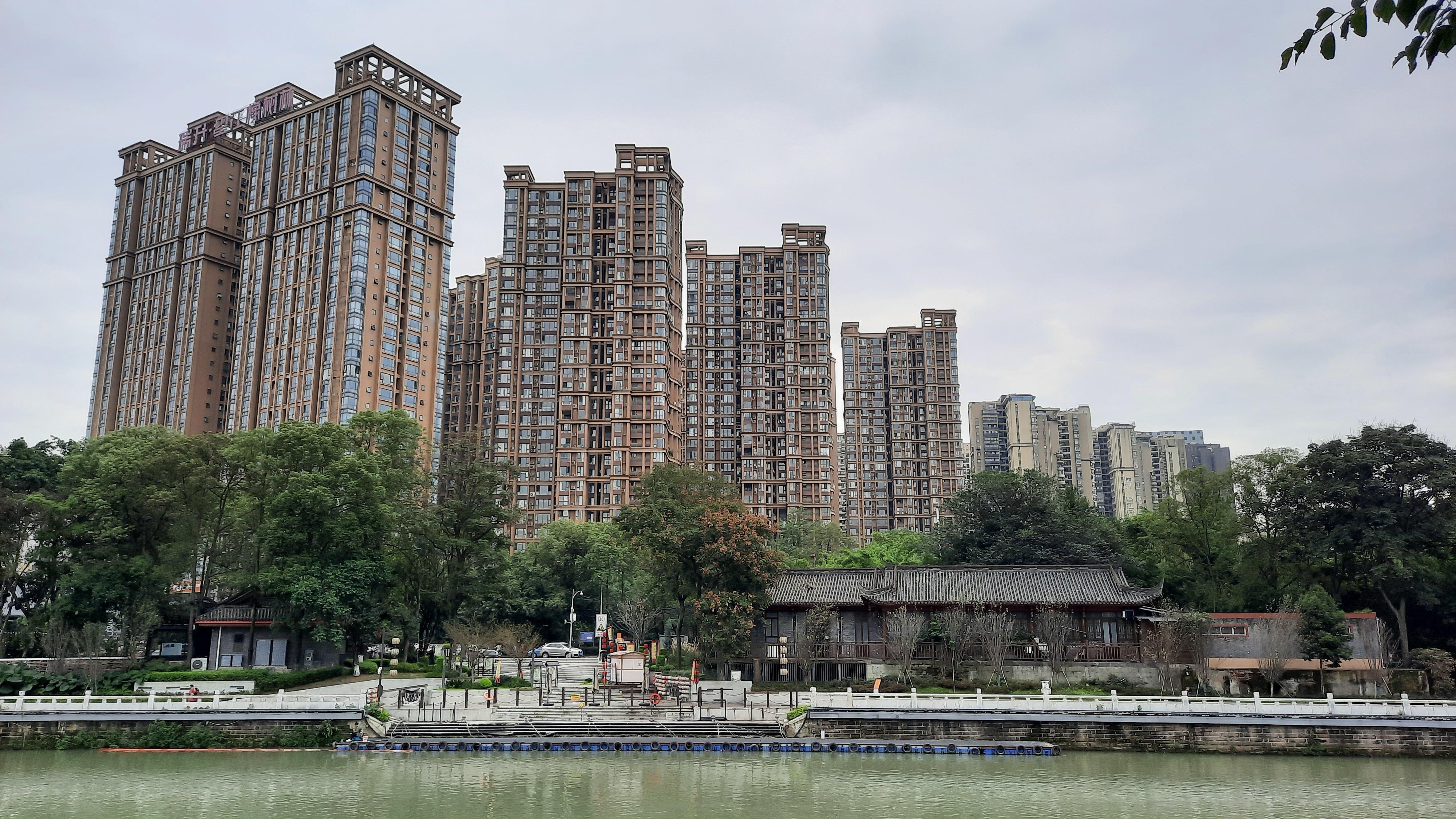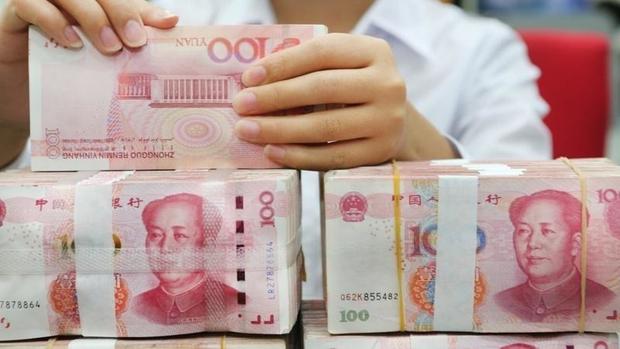 People walk in the Jinli Ancient Street in Chengdu, capital of Sichuan province, China, on Oct 20, 2023. (GARY CHIU / CHINA DAILY)
People walk in the Jinli Ancient Street in Chengdu, capital of Sichuan province, China, on Oct 20, 2023. (GARY CHIU / CHINA DAILY)
At first glance, the situation faced by China's economy may not appear to offer hope for a strong recovery.
The slump in the property sector continued to linger, while sentiment on the stock market appeared to be lukewarm, with the Shanghai Composite Index ending last year's trading below the key 3,000-point benchmark.
However, a rational look at the situation shows there is plenty of potential amid the current difficulties.
With governments at different levels well aware of the challenges faced by the property sector, measures to resolve the problem have been stepped up, and international investment banks are now predicting only a narrowing contraction for the sector.
The investment banks are forecasting that household consumption and services activity will further normalize this year after the fallout from the COVID-19 pandemic. Exports may strengthen as global trade recovers, while manufacturing and infrastructure investment is expected to remain buoyant due to industrial upgrading and policy support.
The policy stance of stepping up growth stabilization efforts, coupled with the unfolding recovery momentum and ongoing efforts to resolve financial risks associated with the real estate sector and local government debt issues, have laid the foundation for China's economic performance to improve in 2024, said Zhang Ming, deputy director of the Institute of Finance and Banking at the Chinese Academy of Social Sciences
The economy is considered to have bottomed out in the middle of last year, and the recovery momentum is poised to continue this year, helping secure GDP growth of around or slightly less than 5 percent, economists and experts said.
Such a pace would be largely on par with that of last year, when China's economy is forecast by the World Bank to have grown by 5.2 percent. Individuals and enterprises will likely fare better this year, experts said, as growth will be driven more by the economy's underlying momentum, rather than a favorable comparison base.
In other words, the Chinese economy is poised to see further improvements in 2024.
Last month's tone-setting Central Economic Work Conference called for efforts to continuously consolidate and promote the positive momentum of economic recovery, while recognizing that some difficulties and challenges must be tackled to achieve this goal. Such hurdles include a lack of effective demand, overcapacity in some industries, weak social expectations, and numerous hidden risks.
ALSO READ: China vows support for development of private economy
As a result, the conference underlined the necessity of adhering to the general principle of seeking progress while maintaining stability, promoting stability through progress, and establishing the new before abolishing the old.
Zhang Ming, deputy director of the Institute of Finance and Banking at the Chinese Academy of Social Sciences, or CASS, said the expression "promoting stability through progress "indicates that policymakers are placing significant emphasis on maintaining a reasonable GDP growth rate this year.
The policy stance of stepping up growth stabilization efforts, coupled with the unfolding recovery momentum and ongoing efforts to resolve financial risks associated with the real estate sector and local government debt issues, have laid the foundation for China's economic performance to improve in 2024, Zhang said.
 This undated file photo shows a view of the Lujiazui area of Pudong in Shanghai, China. (PHOTO / XINHUA)
This undated file photo shows a view of the Lujiazui area of Pudong in Shanghai, China. (PHOTO / XINHUA)
"Even though the GDP growth rate for 2024, which is expected to be around 5 percent, may be lower than that of 2023, the actual economic momentum and the perceptions of entities at the micro level will significantly improve," Zhang added.
The Chinese economy hit the bottom in July, and has been recovering gradually since August, with retail sales and exports improving, and such momentum is expected to be sustained this year, Zhang said.
The nation's economic growth stood at 5.2 percent for the first three quarters of last year. There was a strong rebound in the first quarter due to adjusted COVID-19 policies, but weaker growth in the second quarter amid sluggish domestic and external demand, renewed property sector weakness and rising local government debt pressures.
As incomes improve, consumption is expected to be the primary driver — contributing about two-thirds to this year's GDP growth, said Zhu Haibin, chief China economist at JPMorgan. The household savings rate may also move lower, meaning that consumers tend to spend more of their income
Growth solidified in the second half of last year as policy support was stepped up. In November, export growth turned positive at 0.5 percent year-on-year in dollar terms, while retail sales rose by 10.1 percent amid a broader pickup in business as services activity and industrial output also accelerated, official data showed.
Zhu Haibin, chief China economist at JPMorgan, forecasts the economy to grow by 4.9 percent this year, in line with what he expects will be an official 2024 growth target of around 5 percent.
As incomes improve, consumption is expected to be the primary driver — contributing about two-thirds to this year's GDP growth, Zhu said. The household savings rate may also move lower, meaning that consumers tend to spend more of their income.
ALSO READ: China expected to maintain steady growth
The investment will contribute about one-third of growth, while the net export contribution will be minor, he said. Manufacturing and infrastructure investment activity will continue to outperform, but the growth rate may moderate.
Real estate investment will be the swing factor, Zhu said, with the decline possibly narrowing to about 2 percent to 4 percent this year, compared with almost 10 percent in 2023.
The narrowing decline is based on a forecast that the People's Bank of China, or PBOC, the central bank, may use pledged supplementary lending (PSL) and other policy tools to provide about 1 trillion yuan ($139.8 billion) in funding support for affordable housing and shantytown redevelopment projects, Zhu said. "This move should be very helpful for growth reaching nearly 5 percent," Zhu added.
The Central Economic Work Conference emphasized the need to ensure stable and sound development of the real estate market and advance the construction of affordable housing and public infrastructure for both normal and emergency use, along with the renovation of shantytowns in cities.
 This photo taken from the Wangjiang Pavilion Park shows residential buildings near the Jin River in Chengdu, capital of Sichuan province, China, on Oct 20, 2023. (GARY CHIU / CHINA DAILY)
This photo taken from the Wangjiang Pavilion Park shows residential buildings near the Jin River in Chengdu, capital of Sichuan province, China, on Oct 20, 2023. (GARY CHIU / CHINA DAILY)
Focus on property
In the first 11 months of last year, China's total fixed-asset investment in real estate development fell by 9.4 percent year-on-year, while the total area of properties sold declined by 8 percent, the National Bureau of Statistics said.
Experts said the property market downturn has had a negative spillover effect on the nation's economic health due to the sector's extensive links to upstream and downstream industries, and local government revenue. Weakening housing prices also eroded household wealth, which in turn dampened consumer spending.
Zhang Bin, deputy director of CASS' Institute of World Economics and Politics, said measures aimed at stabilizing the real estate sector are now the "No 1 policy" for macroeconomic stability, as the sector has overshot to the downside, dragging down overall demand.
It is necessary for the central government to break the negative cycle and strengthen support for the delivery of presold homes this year, perhaps with a monetary and fiscal package worth about 3 trillion yuan based on preliminary estimates, said Lu Ting, chief China economist at Nomura, a leading international financial institution
"The property market has reached a tipping point, as not only should some purchase restrictions be lifted, but some incentives are also needed for home buying," said Zhang Bin, who is also a member of the 14th National Committee of the Chinese People's Political Consultative Conference, the country's top political advisory body.
As part of the latest steps to stabilize the real estate market, Beijing and Shanghai reduced down payment ratios and mortgage rate floors in the middle of last month, after Guangzhou and Shenzhen in Guangdong province eased housing market policies.
ALSO READ: Report: China leads in scale of digital economy in Asia
Lu Ting, chief China economist at Nomura, a leading international financial institution, said measures to bolster housing demand would be more effective in stabilizing the market if the critical issue of presold home delivery was fully resolved.
Recovery in the property sector still faces a key obstacle, as many presold housing projects are not delivered on time, which has discouraged families from buying properties, and made it even harder for real estate developers to secure sufficient funding to deliver such homes, Lu said.
It is necessary for the central government to break the negative cycle and strengthen support for the delivery of presold homes this year, perhaps with a monetary and fiscal package worth about 3 trillion yuan based on preliminary estimates, he said.
Lu added that the scope for China to ease monetary and fiscal policies is expanding, as downward pressures on the renminbi against the dollar have eased, with the US projected to enter a cycle of interest rate cuts this year.
 In this file photo dated July 23, 2018, a clerk counts yuan banknotes at a branch of Bank of China in Nantong city, East China's Jiangsu province. (PHOTO / IC)
In this file photo dated July 23, 2018, a clerk counts yuan banknotes at a branch of Bank of China in Nantong city, East China's Jiangsu province. (PHOTO / IC)
The Central Economic Work Conference decided that proactive fiscal policies should be strengthened appropriately and their effectiveness improved, while prudent monetary policies should be flexible, moderate, precise and effective.
Experts said China will likely strengthen fiscal expansion and take accommodative monetary steps to jointly address the challenge of sufficient demand this year, helping further anchor price levels nationwide.
Support for demand
China's consumer price index, a key gauge of inflation, dropped by 0.5 percent year-on-year in November, following a 0.2 percent dip in October, indicating that demand remained weak.
Zheng Houcheng, chief macroeconomist at Yingda Securities Co, said the PBOC will likely cut interest rates or the reserve requirement ratio — the proportion of money lenders must keep as reserves — in the first quarter of this year, when the economy needs support amid global economic downward pressures, while low inflation provides room for easing
Pointing to policymakers' emphasis on bringing price levels to a more reasonable range, Pan Gongsheng, governor of the PBOC, said late last month that the central bank will match the growth of social financing and money supply with the expected targets for both economic growth and price levels.
Zheng Houcheng, chief macroeconomist at Yingda Securities Co, said the PBOC will likely cut interest rates or the reserve requirement ratio — the proportion of money lenders must keep as reserves — in the first quarter of this year, when the economy needs support amid global economic downward pressures, while low inflation provides room for easing.
ALSO READ: China moves to bolster economic recovery with RRR cut
Last month, China's major banks reduced interest rates on deposits, a move experts see as heralding cuts in benchmark lending rates. Such reductions are considered essential for easing the debt servicing costs for businesses and households, thus bolstering their willingness to invest and consume.
Positive signals are also evident on the fiscal front.
Last month, the annual work conference of the Ministry of Finance vowed to maintain a proper fiscal expenditure level, set the scale of government investment smartly to give full play to its effects, and optimize tax and fee policies by making them more accurate and target-oriented.
Wen Bin, chief economist at China Minsheng Bank, said the nation may set this year's budgeted deficit-to-GDP ratio at about 3.5 percent, and this figure could be raised further if economic growth misses expectations.
Last year, the deficit-to-GDP ratio was raised from 3 percent to about 3.8 percent in October, following approval for the issuance of special treasury bonds worth 1 trillion yuan.
 People walk in the open shopping mall Taikoo Li Chengdu in Chengdu, capital of Sichuan province, China, on Oct 21, 2023. (GARY CHIU / CHINA DAILY)
People walk in the open shopping mall Taikoo Li Chengdu in Chengdu, capital of Sichuan province, China, on Oct 21, 2023. (GARY CHIU / CHINA DAILY)
Wen said the annual quota of local government special-purpose bonds may rise to 4 trillion yuan this year, up from 3.8 trillion yuan in 2023.
With the economy expected to further normalize this year, Wen said China's annual consumer price index growth may recover to 1 percent, up from an estimated 0.2 percent last year, as spending strengthens, global commodity prices increase, and domestic food prices edge up.
Kristina Hooper, chief global market strategist at Invesco, a worldwide investment management company, said she is positive about the performance of Chinese equities this year, as more macroeconomic support looks to be forthcoming.
READ MORE: Data applications key to driving China's economic growth
Ivan Gonzalez, CEO of reinsurance and country president at Swiss Re China, said the Chinese government has some flexibility from a policy perspective to cope with external and domestic challenges, which will help the economy grow by around 4.5 percent this year based on the reinsurer's forecast.
"Although this growth could be below the level China has experienced in the past few years, it will still be the highest growth among emerging and developed economies in 2024," Gonzalez added.


